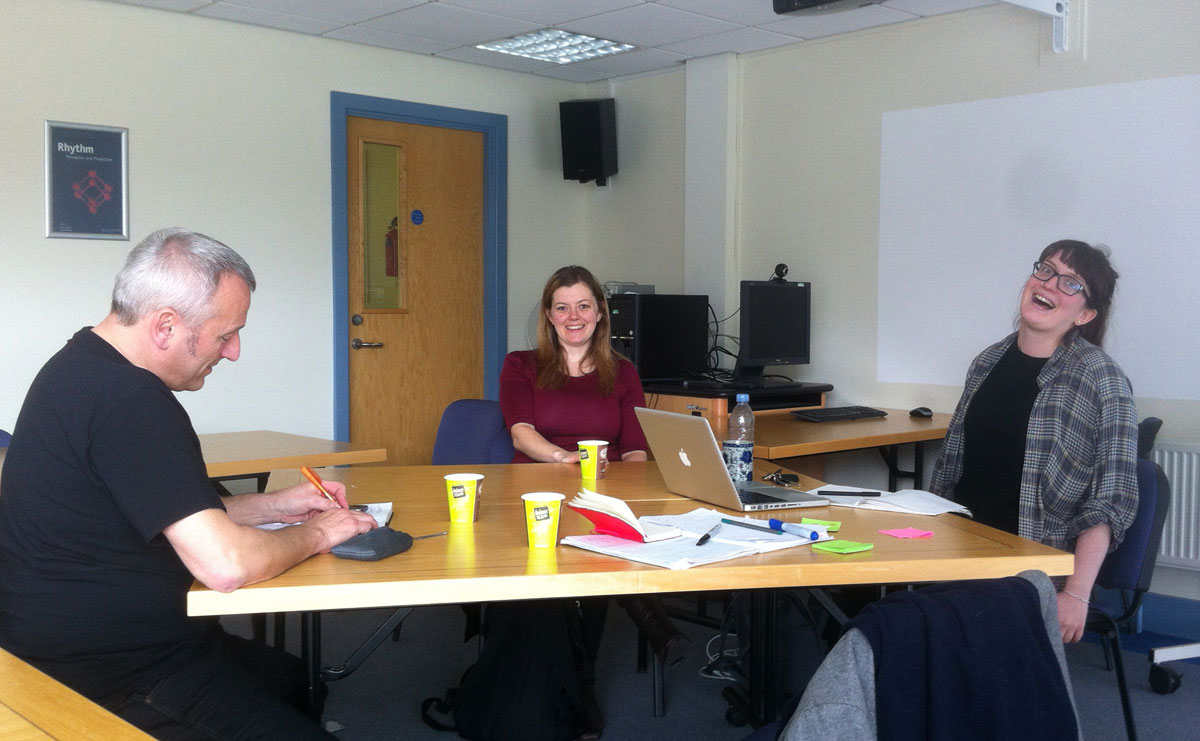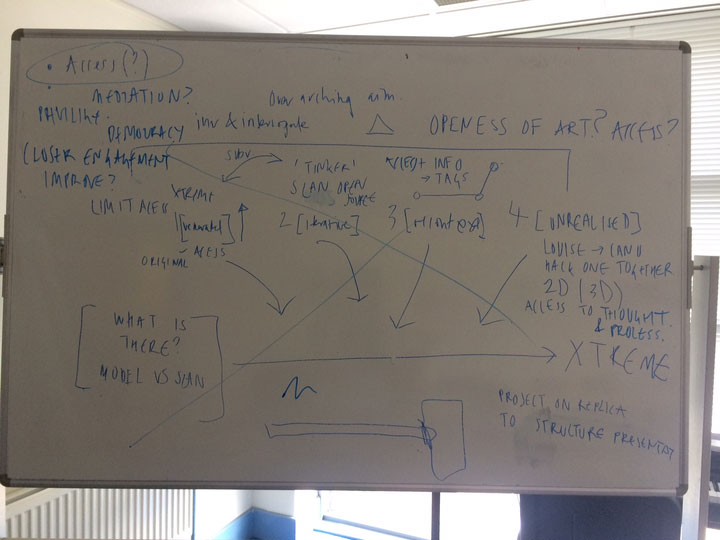Leeds Creative Labs — Hepworth Edition
I wrote this post for the Leeds Creative Labs — Hepworth Edition where it was published. I‘m also posting it here for archiving.
Here‘s a picture of our excellent team: Steve Manthorp, Louise Atkinson, Joanne Armitage (and me taking the picture).

We roved far and wide in previous meetings, leapfrogging from one idea to the next, careful not to kill anything with even the whiff of goodness. But with the deadline just over a month away, the next two meetings at the School of Music in Leeds were time to focus. As it turned out, four strands emerged quite naturally, each around a certain aspect of the object, its place in the world and its relationship to the gallery and the audience.
- The iterative object is about encouraging people to re-work and re-use works of art, to “fork” them (in web parlance) and do their own thing with the original artworks as the basis. Monkey Jesus cropped up. Cecilia Gimenez’s attempt to restore a fresco by Elias Garcia Martinez was derided at first but has become an attraction in itself. What would happen if we provided people with a framework to encourage this kind of behaviour with Hepworth’s sculptures?
- The venerated object pokes at barriers – physical and otherwise – which can placed between the viewer and a work of art. Consider an object encased in glass which becomes gradually more opaque as more people look at it. Or even one which would be destroyed if viewed too many times. Taking things to extremes helps to highlight how things are at the moment, to understand the current situation and try to change it. The practical ways we could make this happen – such as electrochromic glass and Sonte glass – also made interesting discussions.
- The decontextualised object is crammed with hyped technology such as 3D printing and computer vision, but at heart it’s about trying to bring some of the qualities and affordances of the web to our physical interactions with works of art. Most good gallery and museum websites have ways to explore the collection, placing an artwork in context of its metadata such as artist, country, date, materials, period, etc. Lots of people are already scanning works of art. What would it be like if people could handle 3D prints of works of art and be presented with relevant information projected around it?
- The unrealised object plumbs the depths of the Hepworth archives for sketches, notes and other fragments which the artist did not make into sculptures. What if we could bring those works off the page and into the world?

These ideas started to hang together quite nicely. In each case we picked up on stuff which is already happening and tried to create a framework which would encourage that behaviour and help people present it back to the world. The idea of “open source” kept cropping up as a model for collaboration and co-creating. Perhaps an even better one is “view source”. Being able to view source on a HTML page is a vital part of seeing how a webpage is constructed, copy and pasting it and using it yourself. This approach seem to be at the heart of each of our explorations – what would the ability to “view source” look like for sculpture, what behaviours would it encourage, would they be worthwhile? Come along to the Hepworth on 4th June to find out.